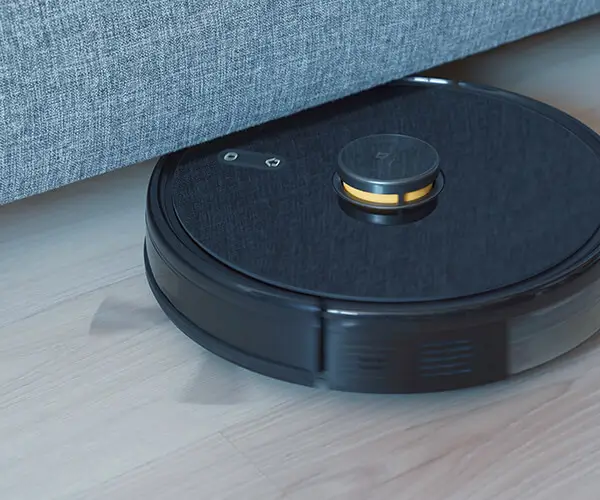In an era where remote work has become the norm rather than the exception, the ability to connect securely and efficiently to Windows-based systems from anywhere in the world is no longer a luxury—it's a necessity. Whether you're managing a fleet of enterprise servers, supporting remote employees, or simply trying to access your personal computer from a different location, remote access control software for Windows plays a pivotal role in enabling these seamless connections.

The Rise of Remote Access in the Digital Age
The world of IT is constantly evolving, with digital transformation fueling new ways for users to interact with their data and devices. Traditional office setups with on-premise hardware have been gradually replaced by flexible, cloud-integrated solutions that prioritize mobility and remote accessibility. Remote access software acts as the bridge connecting remote users to their Windows systems, empowering productivity and ensuring business continuity even outside traditional office walls.
What is Remote Access Control Software?
At its core, remote access control software is a tool designed to facilitate secure, real-time connectivity to computers or networks remotely. It provides a user-friendly interface that allows users to control devices as if they were sitting directly in front of them. For Windows environments, this software often integrates with native Windows services like Remote Desktop Protocol (RDP) but also includes third-party solutions that offer enhanced security, flexibility, and feature sets.
Think of it as a virtual bridge: one side on your local device and the other on your remote Windows system. When set up correctly, it enables file transfers, live screen sharing, and even remote troubleshooting—functions vital for both individual users and enterprise IT departments.
Why Remote Access Control Software for Windows Matters
Windows remains one of the most widely adopted operating systems worldwide, powering everything from individual laptops to sprawling data centers. That ubiquity makes it a prime target for remote access solutions, which must balance ease of use with stringent security measures.
The importance of this software stems from multiple benefits:
Enhanced Flexibility and Productivity: Users can work from home, on the go, or in unfamiliar environments without hindrance. This flexibility accelerates workflows and promotes work-life balance.
Cost Savings: Reducing the need for physical presence for support or management purposes cuts operational costs—no more urgent on-site visits for minor issues.
Improved Security: Modern remote access solutions incorporate robust encryption, multi-factor authentication, and granular access controls to minimize vulnerability.
Business Continuity: During unforeseen events like natural disasters or pandemics, remote control software ensures operations remain uninterrupted, maintaining service levels.
Features to Look for in Remote Access Software for Windows
Choosing the right software can dramatically influence your experience. Focus on features such as:
Strong Security Protocols: End-to-end encryption, VPN integration, multi-factor authentication (MFA), and detailed audit logs.
Ease of Use: Intuitive user interfaces with one-click connections and minimal setup complexity.
Cross-Platform Compatibility: Support for multiple operating systems including Windows, macOS, Linux, iOS, and Android.
Unattended Access: Ability to connect without requiring someone on the remote end to accept the connection.
Session Recording and Monitoring: Important for compliance and troubleshooting.
Remote Wake-on-LAN: Powering on a sleeping device remotely to facilitate access.
Popular Remote Access Solutions for Windows
Some software solutions have established themselves as industry leaders:
TeamViewer: Known for its user-friendly interface, strong security, and rich feature set including file transfer, remote printing, and session recording.
AnyDesk: Appreciated for its high performance, low latency, and flexible licensing.
Splashtop: Combines affordability with enterprise-grade security, suitable for both individual and business use.
Microsoft Remote Desktop: Built into Windows, offering deep integration with Windows Server environments but with limitations in security customization unless properly configured.
LogMeIn: Focused on business users with extensive management and deployment tools.
Each of these options caters to different needs—whether casual, professional, or enterprise—highlighting the importance of assessing your specific requirements before selecting a solution.
Understanding the Security Landscape
While remote access software unlocks unprecedented convenience, it also opens new avenues for cyber threats. Cybercriminals often target poorly secured remote access points, aiming to exploit vulnerabilities for unauthorized access, data theft, or ransomware attacks.
This underscores the necessity of implementing layered security measures:
Strong Authentication: Use complex passwords, multi-factor authentication, and token-based verification.
Regular Updates: Keep the software and underlying OS-patched against known vulnerabilities.
Network Security: Use VPNs, firewalls, and intrusion detection systems to filter access.
Least Privilege Principle: Grant users only the access necessary for their roles.
Monitoring and Auditing: Maintain logs of all access attempts and sessions to detect anomalies.
Conclusion of Part 1
The landscape of remote access control software for Windows continues to evolve rapidly, driven by demands for mobility, security, and efficiency. As more organizations and individuals rely on remote connectivity to carry out their daily tasks, the importance of selecting the right software becomes paramount. Whether it's safeguarding sensitive data or enabling smooth remote collaboration, the right tools make a solid foundation for your remote operations.
In the next part, we'll delve into practical applications of remote access control software, explore implementation strategies, and discuss future trends shaping this dynamic field.
Established in 2005, Kpower has been dedicated to a professional compact motion unit manufacturer, headquartered in Dongguan, Guangdong Province, China.




































